The books recommended in this blog post give readers a much-due Latin American history lesson – one that U.S. public schools don’t provide.
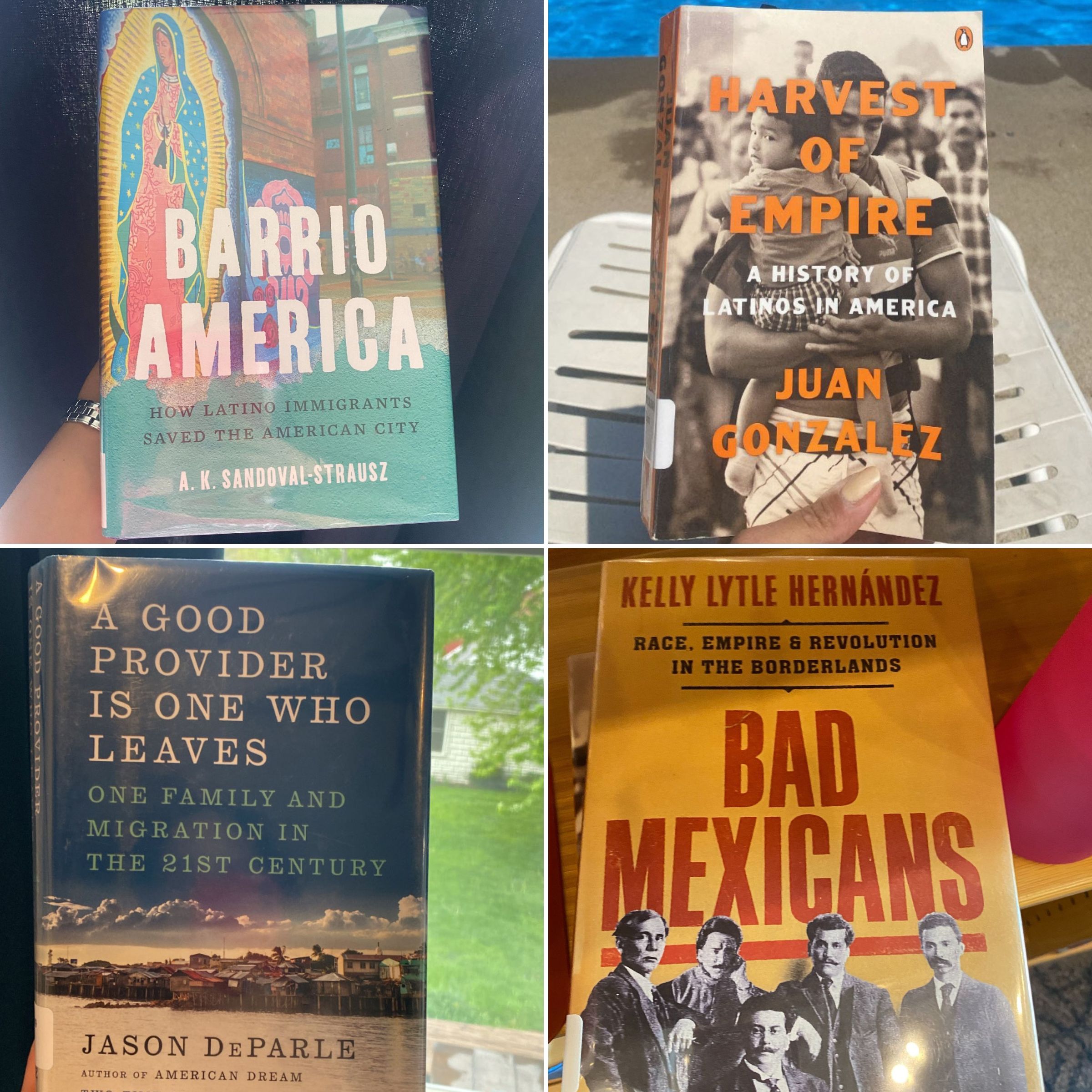
After reading these books, you will be well-versed on how we got to this era in our country – one where the racial demographics of the United States are changing.
Latinos Become A Demographic Majority: The Harvest of U.S. Intervention in Latin America
The United States is rapidly turning majority Latino. Texas is the most recent example of a trend we can expect to see nationwide. The U.S. Census Bureau confirms that Latinos now outnumber whites in Texas.
Latinos are now the largest demographic group in the two largest states, California and Texas. But it won’t end there. The Census Bureau predicts that the Latino population will reach nearly 132 million by midcentury. The U.S. will shift to a non-white, Latino majority. How did we get here?
The Latin American History Books recommended in this blog post set out to answer this question. This post provides a summary introduction to the books. Plus, what I love about each of them.
Run to your local public library and check out these books:
- Barrio America – How Latino Immigrants Saved the American City, A.K Sandoval-Strausz, (2019)
- Bad Mexicans: Race, Empire, and Revolution in the Borderlands, Kelly Lytle Hernández, (2022)
- Harvest of Empire: A History of Latinos In America, Juan Gonzales, (2022)
- A Good Provider Is One Who Leaves: One Family and Migration in the 21st Century, Jason DeParle, (2019)
Latin American Studies Reveal U.S. Imperialism Set In Motion A Latino Diaspora
The U.S. government has a long history of appropriating land across Latin America, pushing Latinos out of their homes. Latin American resources were extracted to build the U.S. global superpower. Violence and racism were used against Latinos and other POCs to benefit the U.S. economy and early white settlers. The U.S. government funded Latin American dictatorships and had their militaries trained to squash independence movements and revolutions. Why? Because the people’s fight for land and liberty threatens U.S. control and investments in Latin America.
Centuries of U.S. imperialism and its aftermath resulted in the Latino diaspora making “white America” a dwindling concept in the 21st century.
In an episode of In The Thick, a podcast about politics, race, and culture, hosts Maria and Julio are joined by Wesley Lowery to discuss his new book “American Whitelash: A Changing Nation and the Cost of Progress.”
When discussing the demographic shift to a Latino majority in the U.S., Lowery says, “What this does for people who [identify] as being racially white is that it presents to them what feels like an impending threat.”
Today, we see a rise in conservative attitudes among white Americans. Those who wish to uphold white supremacist values and policies are the same people who benefit from excluding non-white Americans from achieving wealth and positions of power in the U.S.
However, conservative groups fail to acknowledge that Latinos and other POC didn’t ask to be here. We are here primarily due to U.S. imperialism and intervention in Latin America. More importantly, Latinos have contributed to the U.S. economy while on Latin American soil and as residents of this country. Although conservative groups, public schools, and mainstream media fail to recognize the contributions of Latinos, the Latin American history books recommended in this blog will make those very clear.
The Browning of the U.S. Mounts Pressure for Immigrant Rights, Equality
As the country faces a demographic shift, we are experiencing an “American Whitelash” – the backlash by whites against civil rights advances or an adverse reaction to some political or social occurrence.
One example is the recent Supreme Court ruling to undo affirmative action for college admissions. LULAC, the nation’s oldest and largest Latino civil rights organization, says the verdict contradicts America’s constitutional guarantees of equality.
We also see lashing out against immigrants and Latinos. Florida’s new anti-immigrant law, Senate Bill 1718, is one example. The law inhibits and intimidates immigrant Floridians seeking health care. It also expands E-Verify requirements and penalties on businesses hiring migrant workers, among other things.
Latino and immigrant advocacy groups, including the American Civil Liberties Union (ACLU) of Florida, oppose this Florida bill. They say Florida SB 1718 seeks to target and intimidate Latino communities and mixed-status families.
We must all take on the responsibility of studying Latin American history to better empathize with the growing U.S. Latino population. The fight for equality and immigrant rights for Latinos and POC is better understood when we hold the U.S. accountable for the mass migration of Latinos to the United States.
The Latin American history books recommended below are a great starting point for anyone who wants to study the Latino diaspora and immigration trends from a non-U.S. nationalist perspective.
Barrio America – How Latino Immigrants Saved the American City, A.K Sandoval-Strausz, (2019)
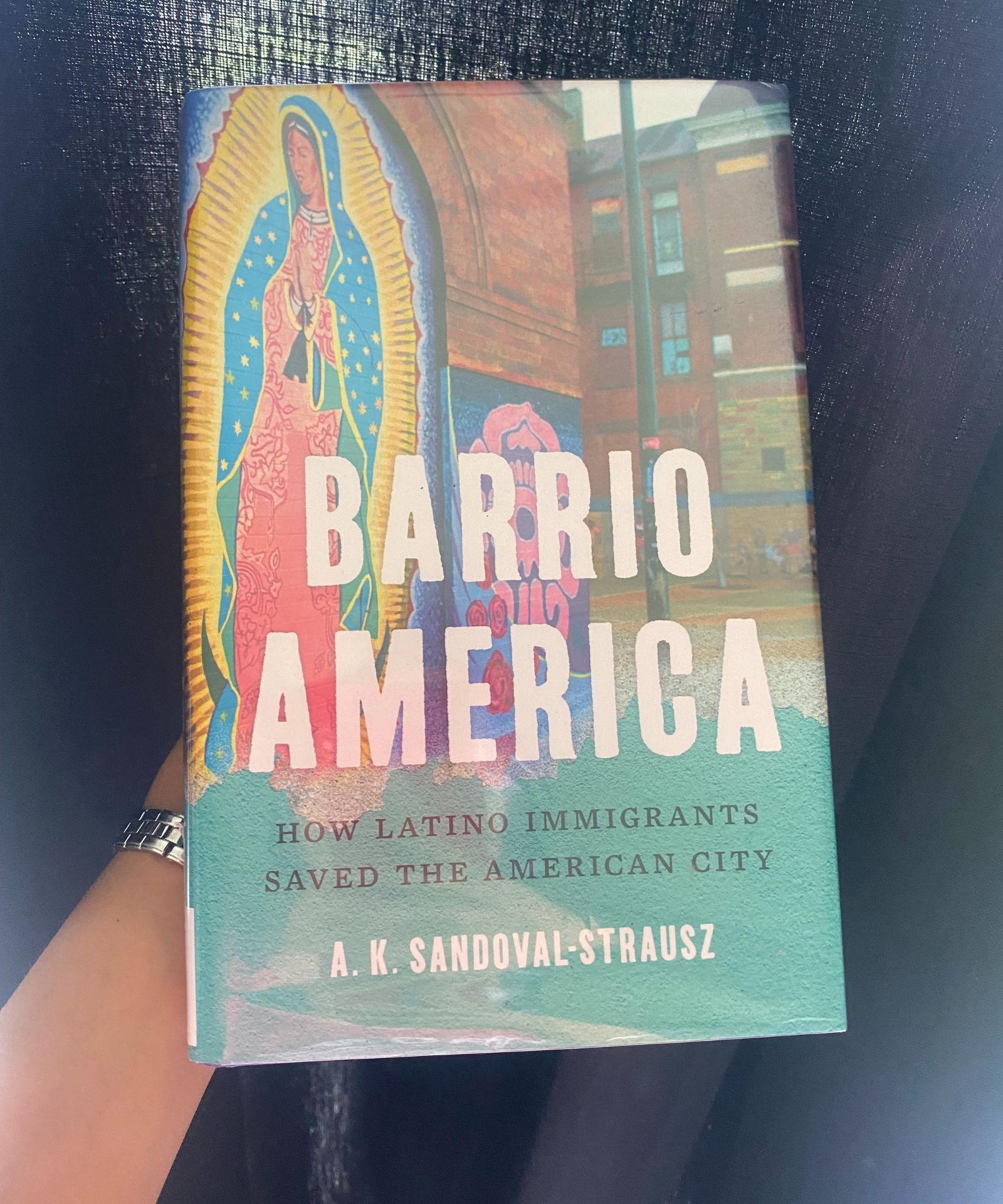
What I love about this book:
This book got me hooked on Latin America and Latino studies. It’s also the first book that I read from this list.
I love that this book discusses how Latinos disrupted the white-black American dichotomy. It reinforces the call for Latino and Black communities to work together.
From the book’s introduction:
In the early 1990s, most people were ready to abandon American cities. The urban crisis was a real problem, resulting from issues that afflicted the nation’s cities for decades. It involved five main elements: population loss, economic decline, fiscal crisis, rising crime, and the racialization of all the above.
Today, big cities are the powerhouse of the national economy. We often hear it was a “creative class” of young professionals who revived America’s dying cities. But this stunning reversal owes much more to another, far less visible group: Latina and Latino newcomers – the people at the center of today’s anti-immigrant hysteria.
In Barrio America, award-winning historian and author recounts the story of urban revitalization in America by focusing on two barrios- Chicago’s Little Village and Dalla’s Oak Cliff. Essential to the idea that Latinos saved the cities is that urban America needed saving when they arrived.
Black people had started migrating to the cities decades earlier when others, including native-born rural whites and European immigrants, were also coming in. But by the late 1960s, as millions of whites were leaving urban areas, the Great Migration of black people ended, so there were no new African Americans to compensate for the population loss. So after 1970, immigrants from Latin America were by far the most numerous group of people arriving in U.S. cities.
Barrio America is the story of how Hispanic migrants and immigrants saved vast areas of American cities, repopulating neighborhoods and revitalizing economies that had been in decline for decades. The changes seen in Little Village and Oak Lawn neighborhoods reflect those in many other metropolitan areas across the United States.
Bad Mexicans: Race, Empire, and Revolution in the Borderlands, Kelly Lytle Hernández, (2022)
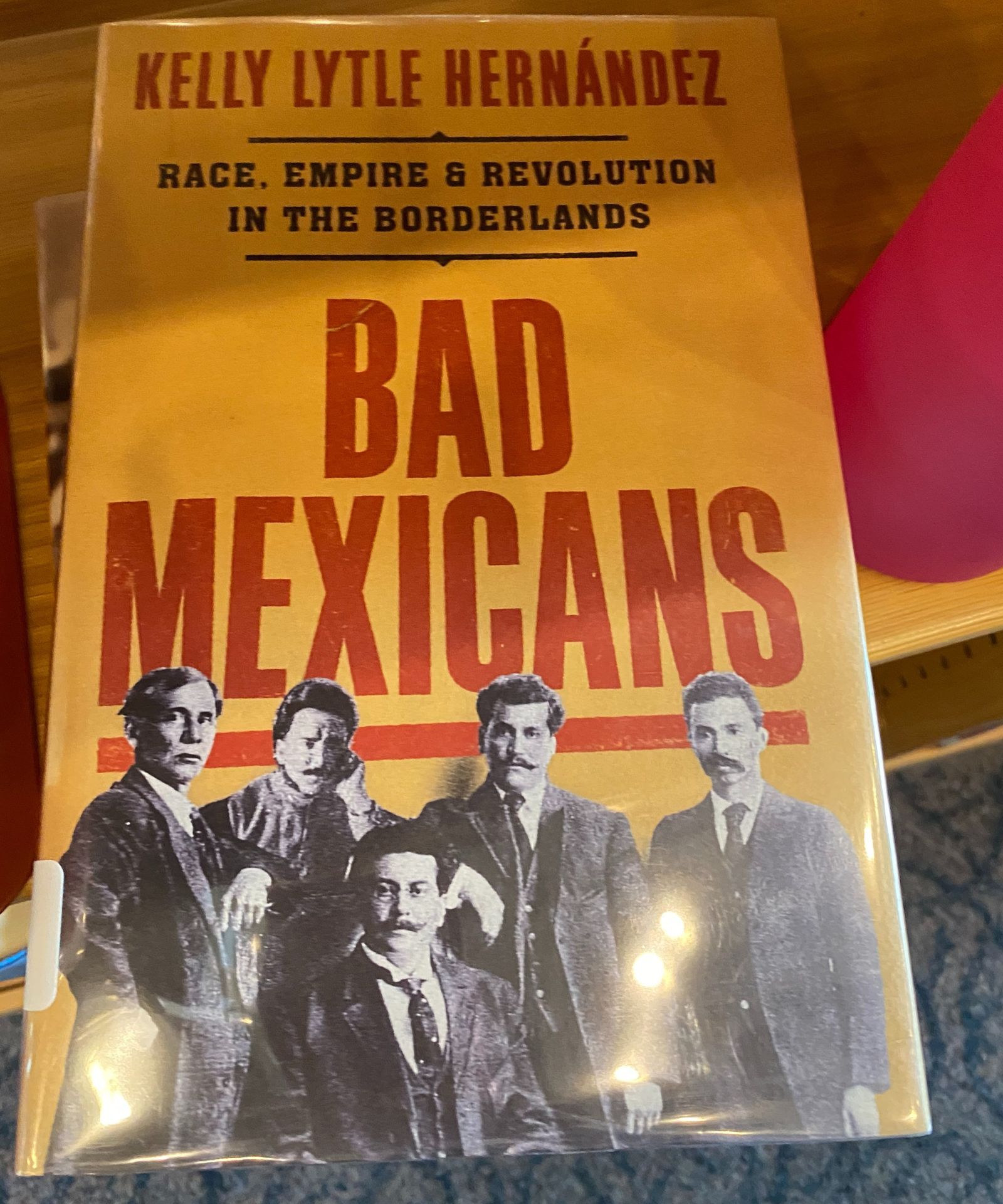
What I love about this book:
I love that this book told me the story of the men and women who incited the Mexican revolution and that these people were writers and journalists who were using their voices to rally the Mexican people against racism, discrimination, and government.
I love that this book names the calls out by name the early U.S. investors in Mexico. These families are recognizable names today and continue to hold the majority of U.S. wealth. It’s important to know who they are and how they created conditions in Mexico that resulted in revolution and mass migration to the north.
Finally, I love that this book is spilling all the tea on how the U.S. government pulled the economic strings of their puppet, the Porfirio Diaz regime, to protect U.S. investors and their interests in Mexico at the expense of the Mexican people.
From the book’s introduction:
The Mexican Revolution (1910-17) remade Mexico. For their role in inspiring the revolt, the story of Ricardo Flores Magon and the magonistas is widely known in Mexico.
The years of fighting have forced more than a million Mexicans to flee northward. This radically reoriented U.S. culture, politics, and society. It cemented the pathways for mass migration from Mexico and gave rise to the first generation of Mexican Americans.
Despite their importance to the histories of both Mexico and the United States, few people in the United States know much about the Mexican revolution and even less about the men and women who incited it.
The story of the United States as a global power began in Mexico under the rule of Porfirio Diaz, buying land, extracting resources, and using labor without directly assuming control over territory or governance. The Diaz regime, acting as a proxy state to enforce U.S. interests across Latin America, made Mexico the “laboratory of U.S. imperialism.”
The magonistas and their insistence on winning “Land and Liberty!” in Mexico imperiled the laboratory of the U.S. empire. Their plan to redistribute land and nationalize industries directly threatened U.S. investors. U.S. authorities, agents, and settlers mobilized to stop them.
This book is about Ricardo Flores Magon and the Magonistas and the cross-border counterinsurgency campaign that failed to stop them.
Harvest of Empire: A History of Latinos In America, Juan Gonzales, (2022)
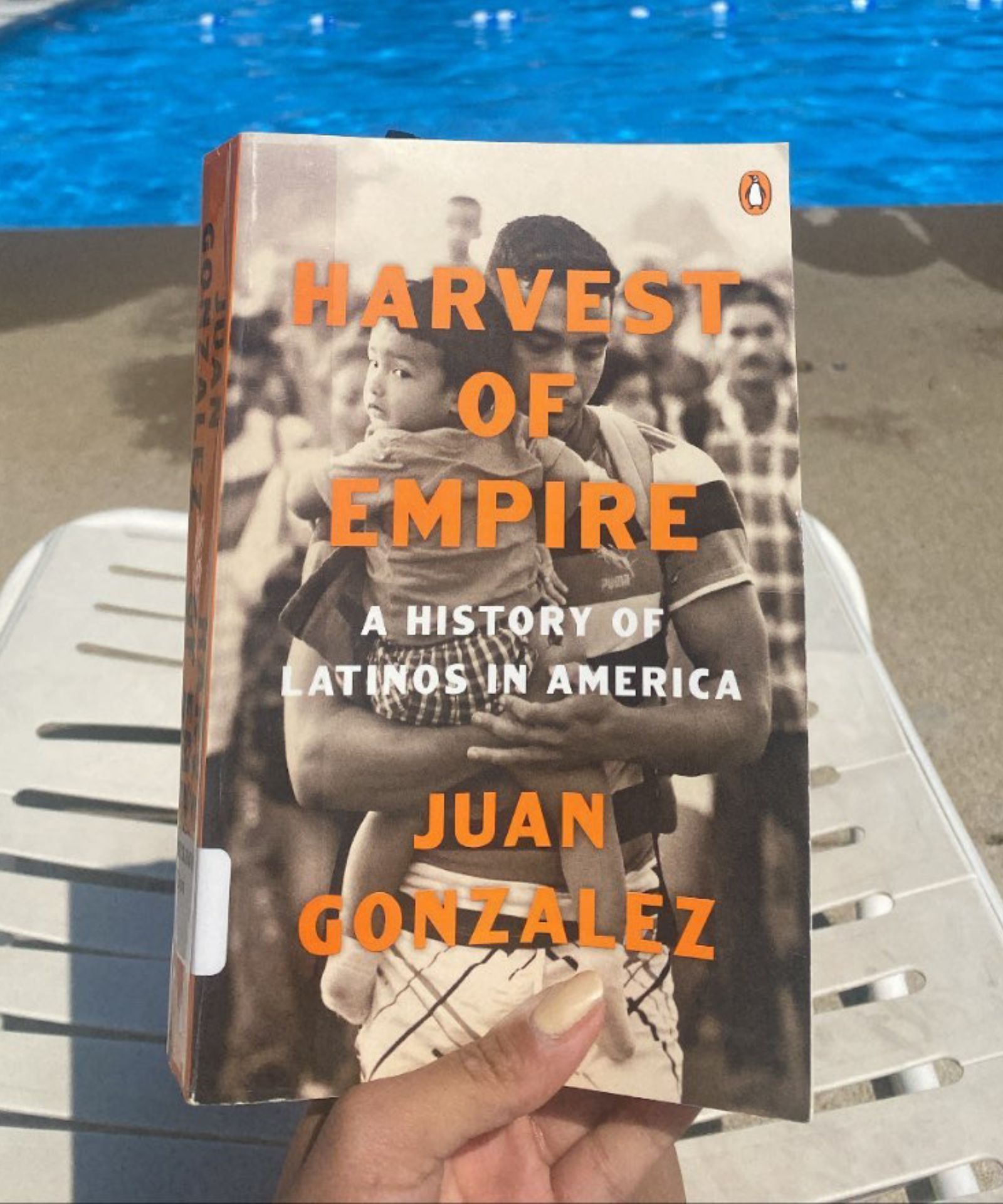
What I love about this book:
This book tells the history of Cuba, Puerto Rico, Columbia, the Dominican Republic, and other Latin American countries. Each of these countries has a different relationship with the United States. However, similarities and trends are visible across all.
Migrants from Latin America have different experiences when arriving in the U.S.; this book tells each perspective.
It’s critical to understand how the various Latino groups vary in experience. This provides insight into how these groups participate in U.S. society and politics today.
From the introduction of the book:
The central argument of this book is that U.S. economic and political domination over Latin America has always been- and continues to be– the underlying reason for the massive Latino presence here. Our vast Latino population is the unintended harvest of the U.S. empire.
This book presents an integrated historical look at Latin America and Latinos in the United States.
A Good Provider Is One Who Leaves: One Family and Migration in the 21st Century, Jason DeParle, (2019)
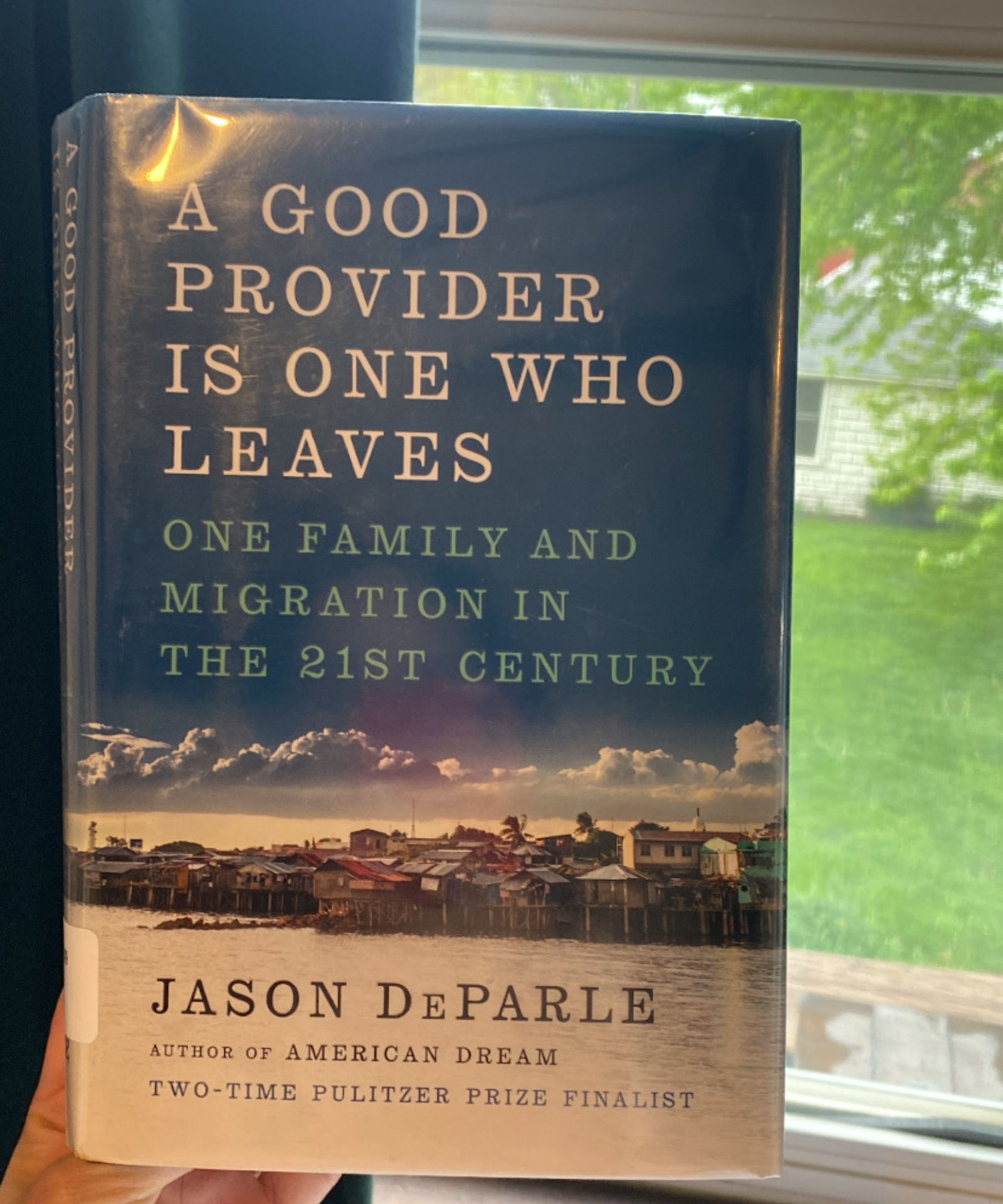
What I love about this book:
This book is not about Latin American history. It tells the story of Filipino migrants. Still, I include it in this list because it provides a basis to compare and contrast the Latino migrant experience. The experience is similar and different in many ways. For one, an American-backed dictator plundered the Philippines, leaving the country’s nationals impoverished and dependent on the U.S.
I love that this book tells one family’s multigenerational migrant stories – from the dad to his daughter to her kids. The reader gets an intimate look at how the need to emigrate affects families – from family separation to cultural divides. This book also touches on remittances – the money migrants send home to help their families escape poverty.
From the introduction of the book:
Tita is the eldest of eleven children raised on a farm. She quit school after sixth grade and, as a teenager, worked in a factory. Marriage and children followed. Her husband, Emet, worked cleaning the pool at a government complex. On the spectrum of Filipino poverty, it marked him as a man of modest means with a $50 monthly salary. Still, it was not enough to feed his family. Emet later took an offer to clean pools in Saudi Arabia. He would make ten times his wage in the Philippines. Unfortunately, he would live five thousand miles away from his home and family. Emet maintained this job and lifestyle for nearly 20 years.
What started as an act of desperation became a way of life. All five of Tita and Emet’s children became overseas workers. The unofficial family creed: “A good provider leaves.”
One of their children, Rosalie, landed her first overseas job as a nurse in the Persian Gulf. She lived away from her family, husband, and children for years. Ultimately, she aimed to reach the United States with her husband and kids. When a hurricane slammed the Texas Gulf, Rosalie got her chance. She would live with her husband and children in Galveston for the first time in years. They had to learn a new country and form a new language simultaneously.
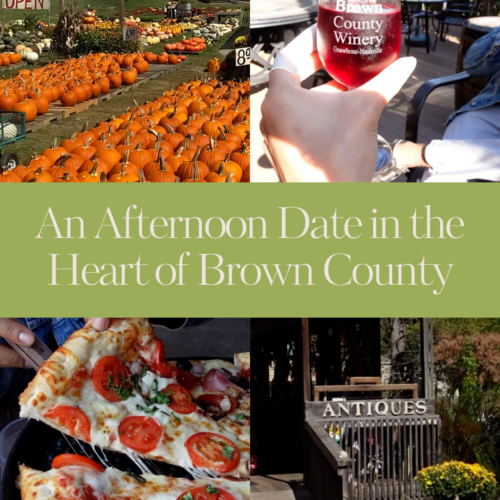


Hello! I could have sworn I’ve been to this blog before but after browsing through some of the post I realized it’s new to me. Anyways, I’m definitely happy I found it and I’ll be book-marking and checking back frequently!
You are my aspiration, I own few web logs and often run out from brand :). “To die for a religion is easier than to live it absolutely.” by Jorge Luis Borges.